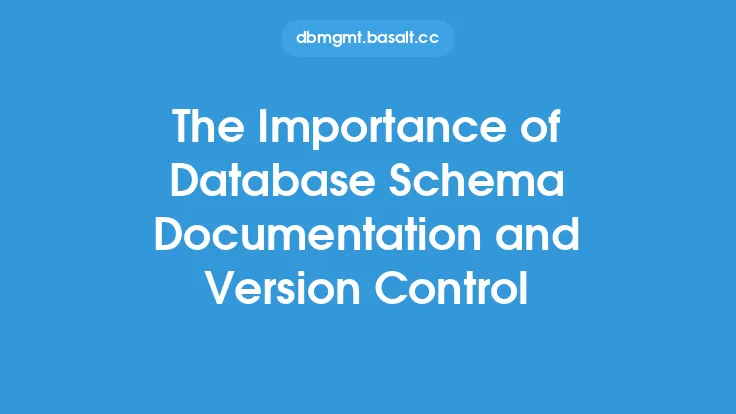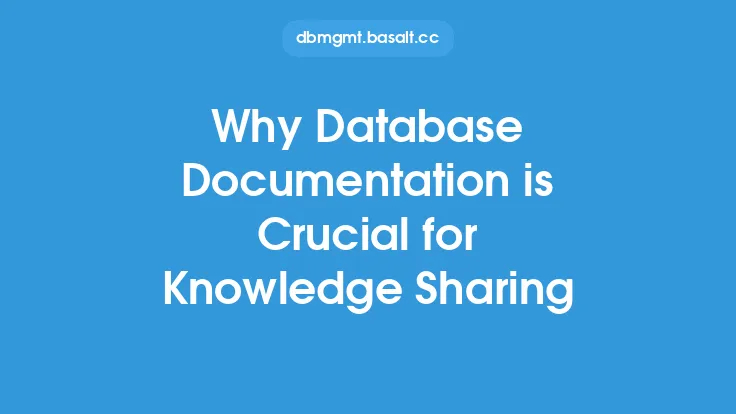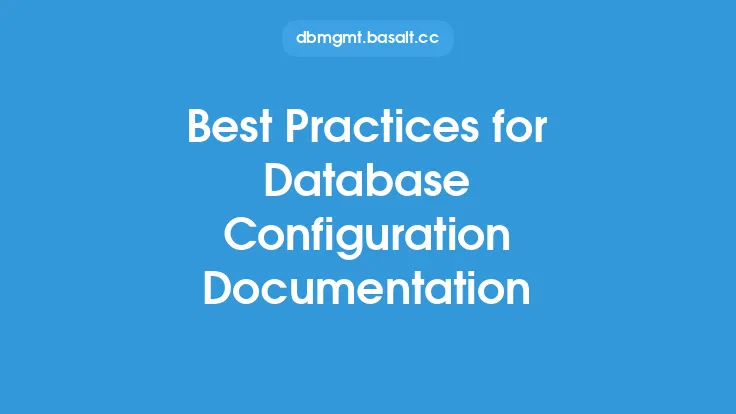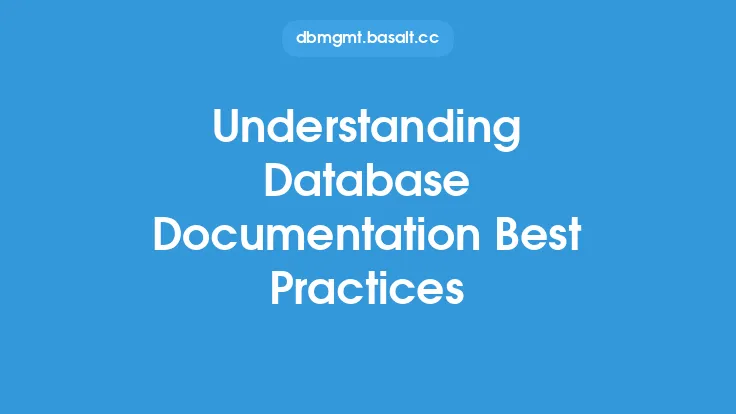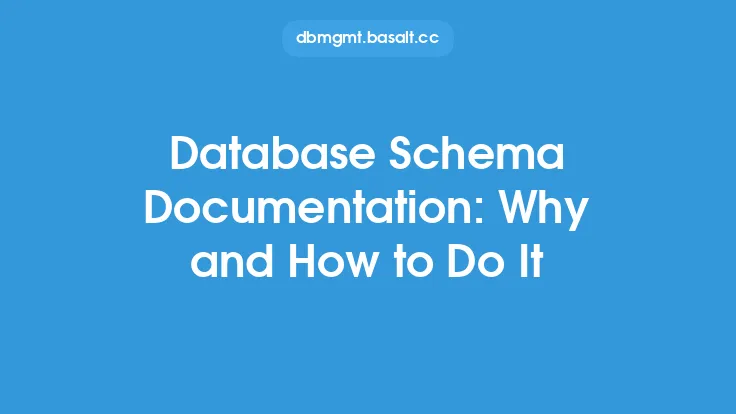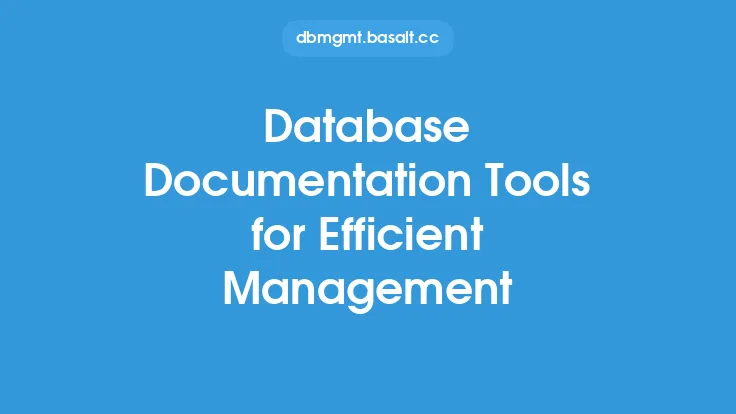Maintaining accurate database documentation is a critical aspect of database administration, as it ensures that the database remains understandable, maintainable, and scalable over time. As databases evolve, their documentation must also evolve to reflect changes in the database structure, schema, and relationships. In this article, we will explore the importance of maintaining accurate database documentation, the challenges associated with it, and the strategies for ensuring that database documentation remains up-to-date and accurate.
Introduction to Database Documentation Maintenance
Database documentation maintenance involves regularly reviewing, updating, and refining the documentation to ensure that it accurately reflects the current state of the database. This includes updating schema diagrams, data dictionaries, and other documentation artifacts to reflect changes in the database structure, relationships, and constraints. Effective database documentation maintenance requires a combination of technical skills, attention to detail, and a deep understanding of the database and its applications.
Challenges in Maintaining Accurate Database Documentation
Maintaining accurate database documentation can be challenging due to several factors. One of the primary challenges is the dynamic nature of databases, which are constantly evolving to meet changing business requirements. As databases grow and change, their documentation must also change to reflect these updates. Additionally, database documentation can become outdated due to changes in personnel, lack of resources, or inadequate documentation processes. Furthermore, the complexity of modern databases, with their multiple schemas, relationships, and dependencies, can make it difficult to maintain accurate and up-to-date documentation.
Strategies for Maintaining Accurate Database Documentation
To maintain accurate database documentation, several strategies can be employed. First, it is essential to establish a regular review and update process, where the documentation is reviewed and updated at regular intervals to reflect changes in the database. This can be achieved through automated tools, such as database documentation generators, or manual processes, such as regular documentation reviews. Second, it is crucial to involve the database development team in the documentation process, as they are best positioned to understand the database structure and relationships. Third, using version control systems, such as Git, can help track changes to the documentation and ensure that all stakeholders have access to the latest version.
Technical Considerations for Database Documentation Maintenance
From a technical perspective, maintaining accurate database documentation requires a deep understanding of the database management system (DBMS) and its associated tools and technologies. For example, database administrators (DBAs) must be familiar with the DBMS's data definition language (DDL) and its capabilities for generating and managing database documentation. Additionally, DBAs must understand the database's schema, relationships, and constraints, as well as its dependencies on other databases and systems. Furthermore, DBAs must be proficient in using database documentation tools, such as Entity-Relationship (ER) diagramming tools, data modeling tools, and documentation generators.
Best Practices for Database Documentation Maintenance
To ensure that database documentation remains accurate and up-to-date, several best practices can be followed. First, it is essential to establish a clear documentation process, with defined roles and responsibilities, to ensure that all stakeholders understand their obligations. Second, using standardized documentation templates and formats can help ensure consistency and accuracy across the documentation. Third, regularly reviewing and updating the documentation can help identify and address any discrepancies or inaccuracies. Fourth, using automated tools, such as database documentation generators, can help streamline the documentation process and reduce the risk of human error.
Conclusion
Maintaining accurate database documentation is a critical aspect of database administration, as it ensures that the database remains understandable, maintainable, and scalable over time. By understanding the challenges associated with database documentation maintenance, employing effective strategies, and following best practices, DBAs can ensure that their database documentation remains accurate and up-to-date. Additionally, by leveraging technical expertise and automated tools, DBAs can streamline the documentation process, reduce the risk of human error, and ensure that their database documentation remains a valuable resource for stakeholders.
